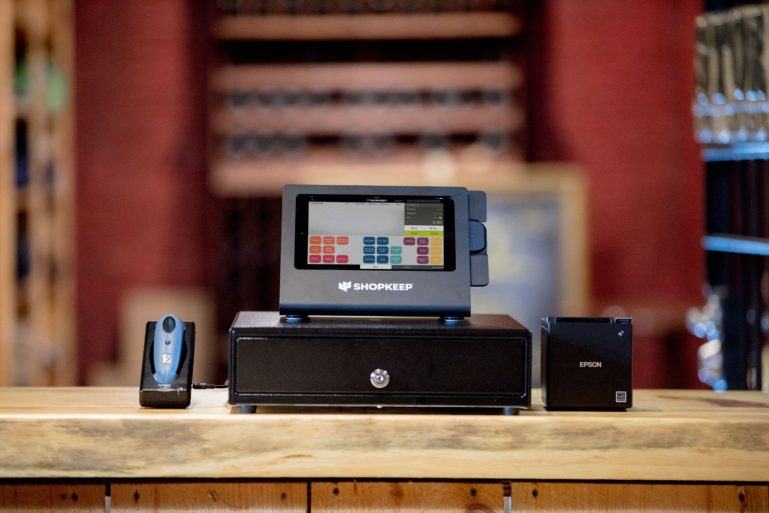
How to Accept Credit Card Payments — The Ultimate Guide
Accepting credit card payments is a standard practice these days. Yet, you’ll still find many small businesses across the U.S. that are cash-only establishments.
More than half, actually. 55 percent of small businesses in the U.S. don’t accept credit card payments. That’s 15 million businesses! And those businesses are missing out on $100 million dollars — about $7,000 per company — simply because they don’t accept plastic as a form of payment.
Are you missing out on sales because your business doesn’t accept credit cards? If so, here’s everything you need to know about setting up a merchant account to accept credit cards for your small business.
Credit Card Basics
One reason business owners shy away from accepting credit card payments is because they simply don’t understand how it works. We can’t say we blame them. But understanding credit card processing and payment processing is easy when we break it down. Here are the major players.
Player 1: Credit Card Associations
On the consumer end of it, you have the four major card networks – Visa, Mastercard, Discover, and American Express. Each one operates on their own network with their own fees. Some of the card networks issue their own cards (ex. American Express) while others work with issuing banks such as Wells Fargo, Bank of America, and others to issue credit cards on their behalf.
Player 2: Merchant Services
On the merchant side of it, you have the acquiring banks, acquirer, or payment processor as it’s commonly called. When a merchant selects a merchant service provider, they are essentially selecting a processor.
Merchant services enable a business to accept, process, and ultimately receive the funds collected from credit and debit cards via payments online or in-store.
Merchant accounts can be obtained from your local bank, a third-party Merchant Service Provider (MSP), or an Independent Sales Organization (ISO). Collectively speaking, you may often hear them referred to as processors or merchant services. Technological advancements have streamlined this process. More and more independent entrepreneurs are choosing cloud-based POS systems that accept credit cards, provide business-boosting software, and process payments via an integrated merchant services provider in one simple monthly package.

How to Select a Merchant Service Provider
We mentioned that merchant accounts can be obtained from your local bank or a third-party provider such as an ISO and MSP. We suggest going with an ISO or MSP because when it comes to credit cards, you need a service provider that actually provides service.
Your business doesn’t have banker’s hours; it’s not 9 – 5. Also, you don’t just need a bank to help you run your business. You need business management tools and an account provider that will have your back when you run into an issue. Besides the level of support, here are a few other things to consider as you go through the vetting process.
Is Your Payment System PCI Compliant?
PCI is short for Payment Card Industry and it was developed by the major card networks out of necessity. During the internet boom of the late 1990’s to the early 2000’s, cybercriminals were on a rampage and found ways to hack into payment networks for illegal gain.
In order to combat this fraudulent activity and protect the consumer’s payment data, the card networks formed a council to create a universal Data Security Standard (DSS). PCI-DSS is the security standard with which all businesses that accept credit cards must comply. Failure to do so can result in hefty fines.
In order to make sure your small business is PCI compliant, select merchant service providers that deploy PCI validated payment applications (software) and hardware. Often POS systems will handle this for you. For example, ShopKeep Payments ensures PCI compliance.
For a software or hardware solution to be validated, it must be evaluated by a Qualified Security Assessor (QSA) appointed by the PCI Security Standards Council. The accessor will examine the entire solution from top to bottom to ensure that it meets data security standards for its classification as software or hardware. If the solution passes the test, they’ll receive the PCI validation stamp of approval for payment security.
In a time when data breaches are becoming more and more common, it’s important that you choose a payment provider that is using industry best practices and PCI validated payment applications.
SEE ALSO: What is PCI Compliance? A Small Business Guide
What Type of Fraud Protection is Offered?
Make sure you can enter additional card information at the point of purchase such as the security code (CVV) or cardholder’s zip code (AVS). Some MSPs also offer fraud protection services or insurance on certain types of fraudulent activity.
What Other Services does the Provider Offer?
MSPs and ISOs not only provide merchant service accounts, but many of them provide other business management tools. Find out if they offer payroll solutions or financing options like cash advances or loans. You might even be offered by a business checking account. If you’re going to use them as your credit card processor you might as well put some of your other tools in the same shed.
How Much Flexibility does the Provider Offer?
If you’re running a brick and mortar store today but you aspire to have an online store up and accepting transactions within the next year, can the service provider process eCommerce payments as well, and vice versa? Just something else to consider.
It’s also important to consider the type of business you want to run. Some processors won’t work with high-risk merchants. Common examples of that include the cannabis and firearms industries. IF that
Credit Card Processing Fees
If you want to accept credit cards at your business, there are going to be transaction fees. You’re paying for a service that the card networks and other aforementioned parties are providing you. However, don’t let processing fees hold you back from the increased revenue accepting credit cards provides.
When you’re choosing a payment processor, make sure the company is transparent about their fees and that you’re actually receiving the services from those fees.
Some fees are unavoidable, such as Interchange processing fees. The wholesale rate or interchange fee is the rate the card brands charge to use their network. It varies based on the type of credit card, with debit cards garnering the lowest fees. If you accept cards, you will be charged this fee, but where you have some wiggle room is in regards to processing fees on top of the interchange.
Three popular pricing structures available to entrepreneurs are Interchange Plus, Tiered Pricing, and flat-rate pricing. Each option has its pros and cons.
Interchange Plus Pricing
Interchange Plus is the markup that merchant services add to the interchange rate set by the card networks. For example, it may cost 1 percent to process a credit card at a wholesale rate. But the merchant service provider might add 35 percent and $0.20 to process that transaction.
If a customer comes in with a $100 purchase and your rate is 1.35 percent plus $0.20 per transaction, from that $100 transaction you’ll see $98.45 deposited into your merchant account: ($100 – 1.35%) – $0.20) = $98.45.
ShopKeep Payments uses an Interchange Plus pricing model because we find it to be the best solution for most merchants, but it’s not your only option.
Tiered Pricing
Because each individual credit and debit card has its own interchange fee, a tiered pricing plan bundles cards into qualified, mid-qualified, and non-qualified rates, and charges a flat-rate fee for each bundle. As Cardfellow explains, “When a business pays credit card processing fees via a tiered pricing model, it does not pay interchange fees directly. Instead, the business pays its processor’s tiered rates, and the processor pays interchange fees on the business’s behalf. This allows the processor to classify interchange fees under its own rate structure by assigning individual interchange categories to its qualified, mid-qualified or non-qualified pricing tiers.”
You can see why this might cause problems. When small business owners only see tiers on their statements, they aren’t able to see if they’re getting the lowest possible rate. Some merchant services use this to their advantage by advertising only the qualified (read: lowest) rates, even though more and more cards, like popular rewards cards, do not qualify for this lowest rate.
For this reason, tiered pricing is falling out of favor among small business owners.
Flat-Rate Pricing
Some credit card processors advertise a flat fee applied to every single transaction. The most trendy flat-rate option is Square, which charges 2.75% per swipe or dip, and 3.5% + 15 cents per keyed-in (typed in) transaction.
While certain small business owners feel more comfortable with a single rate being applied to every transaction, the math doesn’t always support it. If your average transaction amount is higher than $4, you are probably losing money with flat-rate pricing.

Miscellaneous Fees
Miscellaneous fees are debited monthly, or annually. Some of the most common miscellaneous fees you’ll come across are statement fees, service charge fees, customer support fees, batch fees, and PCI compliance fees.
Statement fees are fees that ISO and MSP charge to deliver your statement through paper mail or electronically. These fees are minimal and only a few dollars so they won’t break the bank.
Service charge fees and customer support fees are what the service provider will charge for their service. Whether they use a per-incident model, meaning you would only pay a flat fee per troubleshooting event or a recurring monthly fee, it takes manpower to support your business and someone has to help pay for that.
A batch is the total dollar amount of credit card and debit card charges in a single business day. It’s deposited into the business owner’s merchant account, usually within 24-48 hours. Some processors will charge $0.10 to $0.30 to complete the batch out.
Many credit card processing companies will issue a PCI questionnaire and some companies will charge a PCI compliance monthly fee in addition to setup fees, to ensure your business is meeting the industry standard.
Besides recurring miscellaneous fees, you may also incur incidental fees such as retrieval fees, chargebacks, and ACH Reject fees.
SEE ALSO: How To Save on Credit Card Processing Fees
Chargebacks: What You Need to Know
Perhaps the biggest downside to accepting credit cards is the possibility of chargebacks. Usually the result of fraud, a chargeback happens when a consumer successfully disputes a charge and a small business has to pay it back. As you can imagine, the process is stuffed with fees.
The retrieval fee is the first part of the potential chargeback process. Before a chargeback is officially ruled, the bank will give the merchant a chance to provide supporting documentation showing the legitimacy of the charge. The fee associated with the retrieval process can range from $10 to $25 per occurrence.
The second part of the process is the official ruling of a chargeback. If the merchant fails to provide supporting documentation or loses the ruling, then a chargeback is issued. A chargeback pulls the money from the merchant account, placing it back into
the cardholder’s account.
Then the merchant receives a chargeback fee. The fee is usually another $25. For every chargeback, a small business owner can lose the money from the transaction, the product, and up to $50 in fees. Because of this potential loss, merchants will typically use a basic identity verification process. To do this, ask for the customer’s ID and match it with the credit card they are using. A few seconds could save hundreds, if not thousands, of dollars.
In a similar vein, if a services provider attempts to debit a business owner’s bank account and it lacks sufficient funds, then the merchant will be charged an ACH reject fee. If a merchant service provider attempts to deposit funds into the business’ bank account and it’s closed or blocked then they’ll also receive an ACH Reject fee. A standard ACH Reject fee is $25.
Before You Select an MSP, What Else Do You Need to Know?
One of the main things you want to decide is how you will be accepting payments. For example, will you accept credit cards online, in-store, from a mobile device, or all of the above?
Some processors are hardcoded to certain hardware and others may not have the integration capability needed for point of sale software or eCommerce platforms. Before you settle on a merchant account provider, make certain it can integrate with all the payment platforms you need to run your business.

Hardware For In-Store Payments
If you’d like to process credit cards in-store then you’ll need hardware. For in-store payments, you have four options:
Mobile Payments and Credit Card Readers
Mobile card readers will either plug into the headphone jack of a mobile device such as an iPhone, iPad, Android device, or connect using Bluetooth technology. The mobile reader works with an application you can download to your mobile device.
Once you download the app onto your phone or tablet, you’ll connect the card reader. The app can be used as a standalone payment acceptance device or it can be used as an extension of your point of sale software. If you’re using it as a standalone payment method, you’ll simply enter in the amount of the sale and take the payment using the credit card swiper.
If the mobile application is an extension of your POS software, you’ll be able to ring up inventory items just like you would at the register and process the sale using whatever payment option the customer prefers.
Standalone Credit Card Reader
Brick and mortar stores can use a standard payment terminal as a standalone payment device alongside a simple cash register. Customers can pay with cash at the register and pay with a credit or debit card at the payment terminal.
Virtual Terminal
A virtual terminal is similar to a standalone credit card terminal, except that it’s web-based. From a PC or Mac, you can log into a website that is powered by an online payment gateway, connect a card reader via the USB port and swipe a credit or debit card at the point of purchase.
A Point of Sale (POS) System
A robust POS system lets your customers pay with a credit card or cash, and often serves as a payment processor and general business growth tool.
It should be equipped with plenty of business management tools to help you manage inventory, keep track of employee hours, build customer profiles for marketing purposes, and provide you with an abundance of reports and analytics to help you make smarter, data-driven decisions about your business.
A point of sale system can come in many forms. It can be an all-in-one device with a monitor, printer, and barcode scanner all in one unit that sits atop a cash drawer, or it can be something a sleeker like an iPad POS system.
A comprehensive POS system is by far the best way to go because it allows you to do so much more than just accept payments. However, every business is different and you should always choose the solution that works best for you.
How To Accept Online Payments
While there are some key differences, processing credit cards online is remarkably similar to doing so in a brick-and-mortar store. Ecommerce stores can toss aside those payment terminals their storefronts use and exchange it for something called a payment gateway. This is the same type of online payment gateway that powers a virtual terminal.
Since you’re in an online environment and for simplistic purposes, a gateway can be considered the software version of a credit card terminal for an online credit card payment. It’s an invisible layer that hides behind the web form where customers input their card data. From the gateway, the card data is passed onto the acquirers and card networks for the approval or decline response – just as it would from a credit card terminal.
Once you’ve implemented your device of choice, it’s time to run a credit card test transaction. If the system responds with an error then the credit card processing is not fully functional. If it responds with “approved” or “declined” then the ability to process credit card payments is active and you are good to go!
SEE ALSO: The 8-Minute Guide to Ecommerce vs. Traditional Commerce
Why You Should Accept Credit Card Payments at Your Business
Now that you know how to accept credit card payments, here’s why you should.
Fewer Human Errors and More Theft Prevention
When you accept cash payments, there’s always the risk of running into situations where a cashier gives back too much change, causing the register to be short. If your business is cash-only, this risk of this happening increases tenfold, causing significant headaches for you.
Accepting credit card transactions reduces the chances of a cashier making a mistake. The frequency of cash transactions goes down, meaning fewer human errors. Busy hours become a breeze because the cashier only has to swipe the card and ask the customer if they would like a receipt.
Not only do you reduce the risk of innocent human error, but you also reduce the risk of not-so-innocent human error. When you’re dealing with cash, it’s easy for a dishonest employee to pilfer a few extra dollars when the cash drawer pops open during a sale.
With credit card transactions, employees have no access to cash during the course of the transaction – making it a lot harder to swipe.
Don’t forget the risk of taking in counterfeit money, keeping a large amount of cash-on-hand, and driving to the bank every day to make a deposit. Even though credit card acceptance comes with its own unique security concerns, let’s not forget security is also a concern with cash payments.
Accepting Credit Cards Encourages More Sales
If a customer wants to buy a $200 item, but they only have $150 in cash, they have two options. They can leave the store or use their credit card. That’s an extra $50 spent, by just having the ability to process credit card payments.
More times than not, customers spend more money when they use a credit card. There have been numerous social science and economic research that validates the idea that consumers do in fact spend more using plastic as opposed to cash. And younger customers are even more likely to only use plastic for purchases.
Before a small business owner decides to accept credit cards they should have all the facts and a good understanding of how to accept credit card payments. As outlined in this post, there’s a number of ways you can do it, but it’s up to you to find the best solutions for your business model. So the next time a potential customer comes in to make a huge purchase and wants to use their credit card — smile! You’ve just made a sale.
help you run a more efficient business.
That’s exactly what ISOs and MSPs provide. In addition to merchant accounts, they can offer an entire ecosystem of small business solutions and 24/7/365 customer support.
Want to try ShopKeep for yourself?
Just answer a few easy questions.
Need help finding the right point of sale?
Just complete the form. We’ll call you right back to explain how ShopKeep can work for you.
Hit the ground running.Sprinting, in fact!
Read our free, comprehensive guide, Small Business 101, to learn all you need to know about starting a thriving business.

